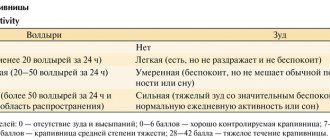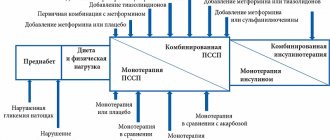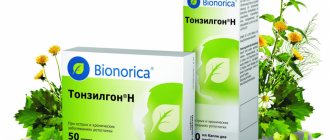Zinaxin. Zinaxin. - instructions, composition, dosage, side effects of use
Zinaxin. Zinaxin.
Zinaxin. Zinaxin.
General characteristics:
Basic physical and chemical characteristics : oval capsule with an opaque green shell and adhesive content;
The composition of 1 capsule of Zinaxin includes ginger extract (Zingiber officinale) 150 mg, which is equivalent to 3000 mg of rhizome of Zingiber officinale, R.; alpinia extract Alpinia galanga 15 mg, which is equivalent to 660 mg of dry rhizome of Alpinia galanga L.;
other components: gelatin, medium chain triglycerides, acetic acid ester monoglycerides, glycerol (E422), yellow wax (E901), anhydrous colloidal silicon, titanium dioxide (E171), chlorophylimide complex (E141).
Release form of the medicine. Capsules, soft.
Pharmacotherapeutic group. Medicines used for pathology of the musculoskeletal system. ATS code M09AX10**.
Action of the medicine.
Zinaxin is a herbal remedy for the treatment of pain and joint stiffness caused by osteoarthritis. The mechanism of action is associated with the suppression of cyclooxygenase, 5-lipoxygenase and TNF-α activity.
Pharmacokinetics have not been studied.
Indications for use of the medicinal product. Joint pain and stiffness due to osteoarthritis.
Method of use and dose. Adults: 1 capsule, 1-2 times a day, with meals. The capsule should be taken with plenty of water. For the first 2 months, take 1 capsule, twice a day (morning and evening), then switch to a maintenance dose - 1-2 capsules per day.
Katapres - instructions, composition, dosage, side effects of use
Side effect. The drug is usually well tolerated, but gastrointestinal discomfort, dyspepsia, nausea, and belching may occur. If the observed phenomena continue for more than two weeks, you should consult a doctor.
Restrictions and contraindications in the use of the drug. Zinaxin is not recommended for children under 12 years of age.
Exceeding the permissible dose of the drug (overdose). Not a single case of overdose has been described. It is advisable not to exceed the recommended dose.
Features of use. The use of Zinaxin should be avoided during pregnancy and lactation.
Interaction with other drugs. The interaction is not yet known.
Terms and conditions of storage.
Keep at a temperature not exceeding 25 ° C, in a place inaccessible to children. Shelf life: 2 years.
The use of diacerein for osteoarthritis of the joints of the hands
Osteoarthritis (OA) is one of the most common diseases of the musculoskeletal system, especially in older age groups. In old age, along with lesions of the knee and hip joints, OA of the distal and proximal interphalangeal joints of the hands occupies a significant place. The prevalence of this type of OA in European countries increases from 10% in patients aged 40–49 years to 92% in patients over 70 years of age.
The study of the pathogenesis of OA contributed to the development and implementation of drugs classified as symptomatic slow-acting drugs, which have not only a symptomatic effect, but may also have a structure-modifying effect [1]. These drugs include diacerein, which has an inhibitory effect on the production and activity of interleukin-1 [2–7]. Clinical studies have demonstrated the effectiveness of diacerein compared to placebo and non-steroidal anti-inflammatory drugs (NSAIDs) in terms of the effect on pain and functional state of the hip and knee joints [8, 9], while the therapeutic value of diacerein in patients with OA of the joints of the hands has been practically not studied. [10].
The purpose of this study was to evaluate the clinical efficacy and safety of diacerein in patients with OA of the hand joints.
Materials and research methods
A comparative controlled randomized study included 60 women who met the clinical diagnostic criteria for OA of the joints of the hands [11]. The study was conducted in accordance with the core principles of Good Clinical Practice (GCP) and the Declaration of Helsinki. All patients expressed voluntary informed consent in writing, and a positive decision was made by the local ethics committee. Using the adaptive randomization method, patients were divided into two groups: 30 patients (group 1) took Arthrodarin (diacerein) at a dose of 50 mg 2 times a day for 4 months and diclofenac sodium 100 mg/day, the remaining 30 patients (group 2) group) - diclofenac sodium 100 mg/day. The groups of patients before the start of the study were comparable in terms of main clinical and demographic indicators (p > 0.05) (Table 1). The average age of patients in group 1 was 57.5 ± 5.3 years, in group 2 - 58.9 ± 7.4 years. The duration of the articular syndrome of less than 5 years was noted in 46.7% of patients of the 1st group and 53.3% of patients of the 2nd group, from 6 to 10 years - in 36.7% and 23.3%, more than 10 years - in 16.6% and 23.3% of patients, respectively. In 83.3% of patients in group 1 and in 66.7% of patients in group 2, Heberden and/or Bouchard nodes were detected. In 18 patients (60%) of the 1st group and 20 (66.6%) patients of the 2nd group, radiographic stage II of the disease was observed, in 12 patients (40%) of the 1st group and 10 (33.3%) patients Group 1 - I x-ray stage. Inclusion criteria were: a reliable diagnosis of OA of the joints of the hands, pain in at least three joints, pain intensity in the analyzed joints > 40 mm on a visual analogue scale (VAS), X-ray stage I or II, the need to take NSAIDs, the absence of clinically significant disorders liver and kidney functions, signed informed consent. The study did not include patients with heart, renal and liver failure, type 1 diabetes mellitus, exacerbation of gastric and duodenal ulcers, as well as patients who received symptomatic slow-acting drugs at the time of inclusion in the study or 6 months before. actions.
Of the 60 patients included in the study, 51 patients (85%) completed the full course of treatment. 4 patients from group 1 and 5 patients from group 2 dropped out in the first month of treatment due to the occurrence of adverse events.
To assess the effectiveness of therapy, we studied the severity of pain, stiffness, dysfunction in joints using VAS, assessed the Dreiser [12] and Auscan [13] functional indices, the need for NSAIDs, and quality of life using the general SF-36 questionnaire.
Statistical processing of the material was carried out using a specialized statistical package SPSS 17.0. In groups, the arithmetic mean (M), standard deviation (σ), mean error of the arithmetic mean (m), and confidence interval were calculated. When comparing indicators in groups, Student's t-test was used. The study of the dynamics of the studied parameters during treatment was carried out using a paired Student's t test. In all cases, the null hypothesis was rejected at p < 0.05.
Results and discussion
The use of Arthrodarin (diacerein) had a positive effect on the symptoms of the disease (Table 2). The effect was observed 4–5 weeks from the start of taking Arthrodarin (diacerein) and increased throughout the entire treatment period. By the 16th week of continuous use of Arthrodarin (diacerein), positive dynamics of all clinical indicators were noted: severity of pain according to VAS (p < 0.01), stiffness (p < 0.01), joint function (p < 0.05), Dreiser index values (p < 0.01), Auscan (p < 0.01). In the group of patients receiving only NSAIDs, positive dynamics of the studied parameters were also noted. However, statistically significant changes in group 2 were observed only in relation to pain (p < 0.05) and the Dreiser index (p < 0.05). In addition, by the end of the 16th week, the values of all studied clinical parameters in the Arthrodarin (diacerein) group were lower than in the group of patients receiving only NSAIDs. For example, the use of Arthrodarin (diacerein) led to a reduction in pain according to VAS by 38.6%, while taking NSAIDs alone led to a reduction in pain by 11.2%. The value of the Dreiser index in the 1st group decreased by 40.6%, in the 2nd group - by 21.7%. The total value of the Auscan index in the Arthrodarin (diacerein) group decreased by 39.9%, in the NSAID group - by 21.7%.
During treatment with Arthrodarin (diacerein), the patients' need for NSAIDs significantly decreased. By the end of the 16th week of treatment, 53.8% of patients in group 1 and 12% in group 2 were able to completely stop taking NSAIDs (χ2 = 8.24; p = 0.004). The dose of NSAIDs taken was reduced by 50% or more in 26.9% of group 1 and 12% of group 2, and 19.2% of patients in group 1 and 76% of patients in group 2 (χ2 = 14.28; p = 0.000) continued to take NSAIDs at the same dose.
The achieved clinical effect, as shown by further observation for up to 9 months of patients receiving Arthrodarin (diacerein), persisted in 15 of 26 patients (57.7%) for another 2-3 months. Patients taking diclofenac only reported a return of symptoms within a few days after stopping treatment. During therapy with Arthrodarin (diacerein) and NSAIDs, the quality of life indicators of patients tended to improve in both groups (Table 3). However, a statistically significant (p < 0.05) improvement was observed only in patients of group 1 on the pain scale, the value of which improved by 28.9%.
Tolerability of Arthrodarin (diacerein) was satisfactory and comparable to NSAIDs. In group 1, side effects that led to discontinuation of the drug in the first month of treatment were detected in 4 patients (13.3%): severe diarrhea was observed in 3, an increase in the level of alanine aminotransferase (ALT) in 1 and aspartate aminotransferase (AST) in 2 times. When Arthrodarin (diacerein) was discontinued, the side effects resolved on their own. Side effects in group 2 were recorded in 5 patients (16.6%): 2 (6.6%) had abdominal pain, 3 (10%) had a 2-fold increase in ALT and AST.
Conclusion
Differences in the anatomical structure and function of joints, a variety of risk factors and outcomes suggest different effectiveness of the same therapeutic approaches for OA of different locations. For example, the correlation between symptoms and radiological changes in OA of the hand joints is even less pronounced than in gonarthrosis and coxarthrosis. However, evidence of the effectiveness of most symptomatic slow-acting drugs currently used for the treatment of OA of the joints of the hands is mainly extrapolated from the results of randomized controlled trials for OA of the knee and hip joints [14], due to the small number and limited range of clinical observations in OA hand joints [15]. The results obtained in our study showed that Arthrodarin (diacerein) has an analgesic and anti-inflammatory effect in patients with OA of the joints of the hands and retains the effect for 2-3 months after cessation of treatment. The use of the drug allows you to reduce the dose of NSAIDs used, and in some cases completely abandon them. Literature data on the tolerability of Arthrodarin (diacerein) are contradictory. In a meta-analysis of 19 controlled, randomized trials conducted by B. Rintelen et al. in 2006 [16], it was shown that Arthrodarin (diacerein) has similar tolerability as NSAIDs, without causing severe side effects. At the same time, in a Cochrane review that included 7 randomized clinical trials conducted by TS Fidelix et al. in 2006 [17], low adherence to treatment was noted due to side effects such as diarrhea (42%). In our study, the tolerability of Arthrodarin (diacerein) was satisfactory. Side effects were recorded in 13.3% of patients, including 10% of them who experienced diarrhea, which required discontinuation of treatment.
Thus, the data from the study demonstrate the presence of a symptomatic effect of Arthrodarin (diacerein) in OA of the joints of the hands. The drug Arthrodarin (diacerein) has a positive effect on the main clinical manifestations of OA of small joints of the hands: it reduces pain, stiffness, improves joint function, with satisfactory tolerability. Further longer studies are needed to confirm the findings.
Literature
- Boileau C., Kwan Tat S., Pelletier JP et al. Diacerhein inhibits the synthesis of resorptive enzymes and reduces osteoclastic differentiation survival in osteoarthritic subchondral bone: a possible mechanism for a protective affect against subchondral bone remodeling // Arthr. Res Ther. 2008. No. 10. R. 71.
- Felisaz N., Boumedien K., Ghayor C. et al. Stimulating effect of Diacerhein on TGF-β1 and b2 expression in articular chondrocytes cultured with and without IL-1 // Osteoarthr. Cart. 1999. No. 7. R. 255–264.
- Burkhard F. Leeb. Clinical Efficacy and Safety of Diacerein in Osteoarthritis - A Review // European Musculoskeletal Review. 2010; 5 (1): 23–29.
- Mengshol LA, Vincenti MP, Coon C. et al. Interleukin-1 induction of collagenase 3 (matrix metallproteinase 13) gene expressions in chondrocytes requires p38, c-Jun N-terminal kinase, and nuclear factor-kappaB: Differential regulation of collagenase 1 and collagenase 3 // Arthritis. Rheum. 2000. No. 43. R. 801–11.
- Yaron M., Shirazi I., Yaron I. Anti-interleukin-1 effects of diacerhein and Rhein in human osteoarthritis synovial tissue and cartilage cultures // Osteoarthr. Cart. 1999. V. 7. No. 3. R. 272–280.
- Balabanova R. M., Kaptaeva A. K. Arthrodarin - a new drug for pathogenetic therapy of osteoarthritis // Scientific and practical rheumatology. 2009. No. 2. P. 49–53.
- Balabanova R. M. The role of interleukin 1 in osteoarthritis and the possibility of blocking it // Modern rheumatology. 2011. No. 1. P. 58–62.
- Pavelka K., Trc T., Karpas K., Vitek P. et al. The efficacy and safety of diacerhein in the treatment of painful osteoarthritis of the knee: a randomized, multicenter, double-blind, placebo-controlled study with primary and points at two months after the end of a three-month treatment period // Arthritis. Rheum. 2007. V. 56. No. 12. R. 4055–4064.
- Bartels EM, Bliddal H, Schondorff PK et al. Symptomatic efficacy and safety of diacerhein in the treatment of osteoarthritis: a meta-analysis of randomized placebo-controlled trials // Osteoarthritis Cartilage. 2010. V. 18. No. 3. R. 289–296.
- Shin K. et al. Efficacy and Tolerability of Diacerein in Hand Osteoarthritis // Ann Rheum Dis, 2011; 70 (supp. l3): 389.
- Altman RD The classification of osteoarthritis//J Rheumatol Suppl. 1995. No. 43. R. 42–43.
- Dreiser RL, Maheu E, Guillou GB et al. Validarion of an algofunctional index for osteoarthritis of the hand // Rev. Rhum. (Engle ed.). 1995. V. 62 (6, suppl. 1). R. 43–53.
- Allen KD, Jordan JM, Renner VB Validity, factor structure, and clinical relevance of the AUSCAN Osteoarthritis Hand Index // Arthritis Rheum. 2006. V. 54. No. 2. R. 551–556.
- Brahmachari B., Chatterijee S., Ghosh A. Efficacy and safety of diacerhein in early knee osteoarthritis: a randomized placebo-controlled trial // Clin Rheumatol. 2009. V. 28. No. 10. R. 1193–1198.
- Alekseeva L. I., Chichasova N. V. Use of piascledine for osteoarthritis of the hands // Pharmateka. 2010. No. 10. pp. 48–55.
- Rintelen B., Neumann K., Leeb BF A meta-analysis of controlled clinical studies with diacerhein in the treatment of osteoarthritis // Arch. Intern. Med. 2006. V. 166. No. 17. R. 1899–1906.
- Fidelix TSA, Trevisani VFV Diacerhein for osteoarthritis. The Cochrane Database of Systematic Reviews. 2006.
E. A. Leushina O. V. Simonova, Doctor of Medical Sciences, Professor
State Budgetary Educational Institution of Higher Professional Education Kirov State Medical Academy of the Ministry of Health of the Russian Federation, Kirov
Contact information for authors for correspondence






